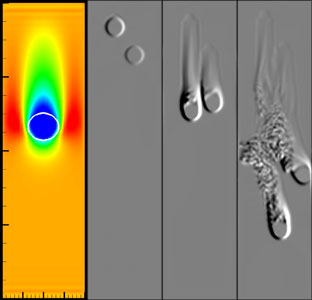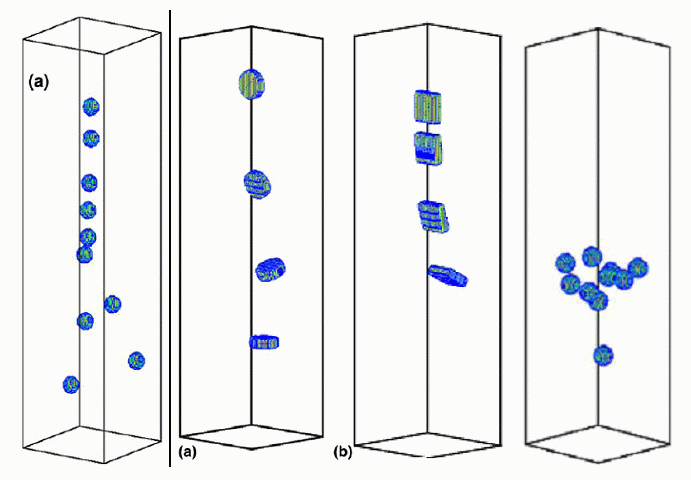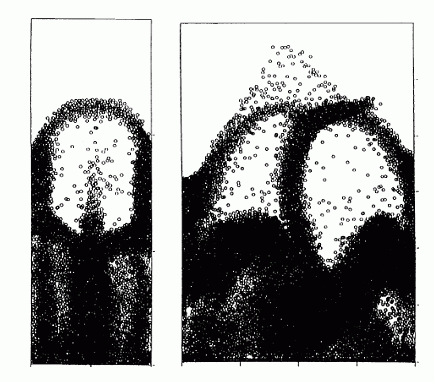Rigid particle motion



We have developed two types of techniques:
- Fully Resolved Simulation (FRS) scheme for rigid particulate flows
- Reduced-Order Simulation scheme for rigid particulate flows
In FRS techniques the flow around each individual particle in fully resolved, i.e. the hydrodynamic force on the particle is not modeled by formulas for drag. In our reduce-order scheme the fluid-particle interaction force is modeled by drag/lift formulas. Our primary focus is on developing FRS techniques. One of our objectives is to use simulations to address fundamental questions in particulate flows e.g. rheology, particle turbulence interaction, developing models for hydrodynamic force on the particles (especially lift).
Fully resolved scheme for rigid particulate flows
We use the immersed/fictitious domain methodology. In this approach the entire fluid-particle domain is assumed to be a fluid. Then, the ‘pseudo-fluid’ within the particle domain is forced to move as a rigid body by imposing a rigidity constraint. We proposed a novel formulation in which the rigidity constraint is imposed by setting the deformation rate tensor within the particle domain equal to zero (Patankar et al., 2000). This formulation was further adapted for fast and efficient computation (Patankar 2001, Sharma & Patankar 2005, Patankar & Sharma 2005).
Our approach is modular – it can be solved in two fractional steps. The first step involves the solution of the fluid equation in the entire domain (on a fixed mesh), and the second step involves correcting the solution in the particle domain so that it is a rigid motion. The additional computational cost in the correction step is not high (less than 2-5% extra computing time) compared to the fluid solution alone. The immersed approach makes it suitable to solve the moving body efficiently. The technique is suitable for parallelization. Our approach can handle bodies of various shapes with equal ease.
This formulations also lays a theoretical framework that is analogous to the Chorin-type fractional step schemes for incompressible fluids. This leaves open the possibility to systematically improve the scheme similar to the fractional step schemes for the incompressibility constraint.
If a CFD solver for a fluid is available then our approach can be used to make it a fluid-particle solver with relative ease. As such, it is also suitable for usage by beginning practitioners.
Reduced-Order scheme for rigid particulate flows
In this approach the fluid equations are solved coupled with the equations of motion of the particles. However, the flow around each individual particle is not resolved. The fluid-particle force is modeled. We use the Richardson-Zaki correlation for drag to model the hydrodynamic force on the particles.
The key novelty in our approach (Patankar & Joseph 2001a, b) is that we have implemented the so-called ‘Lagrangian tracking’ approach for dense particulate flows which was typically done earlier by the Eulerian two-fluid approach.
We are also working on developing models for lift force on the particles using our FRS approach. This model would be included in our reduced-order scheme. Presently, there are good models for drag in dense particulate flows, however, good lift model are still not available. Lift forces are relevant to flows such as sediment transport.
